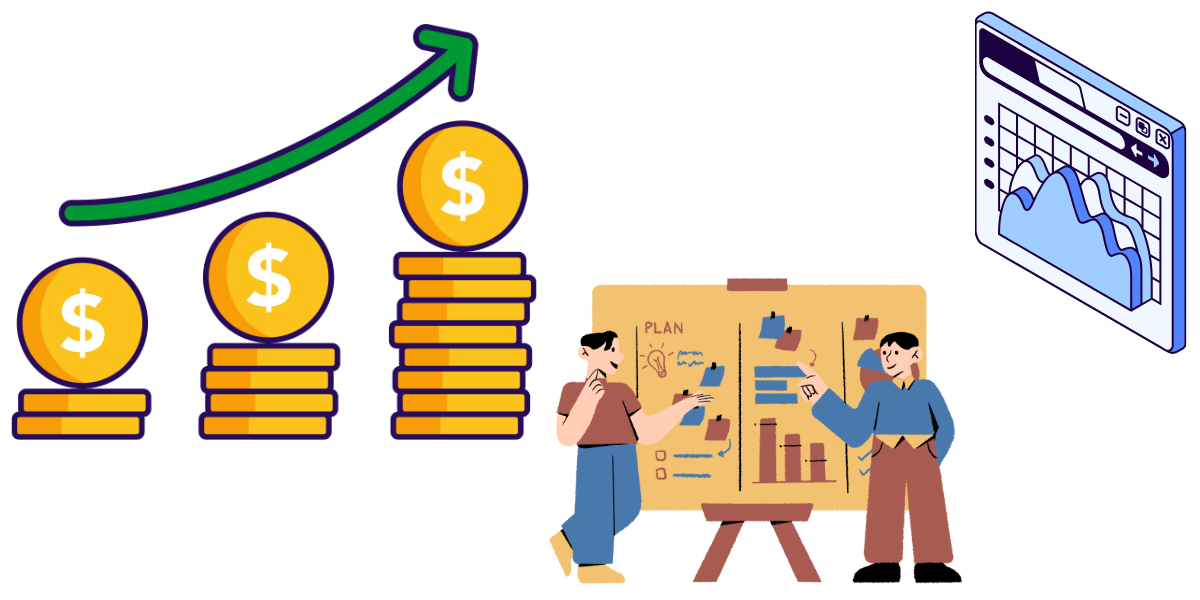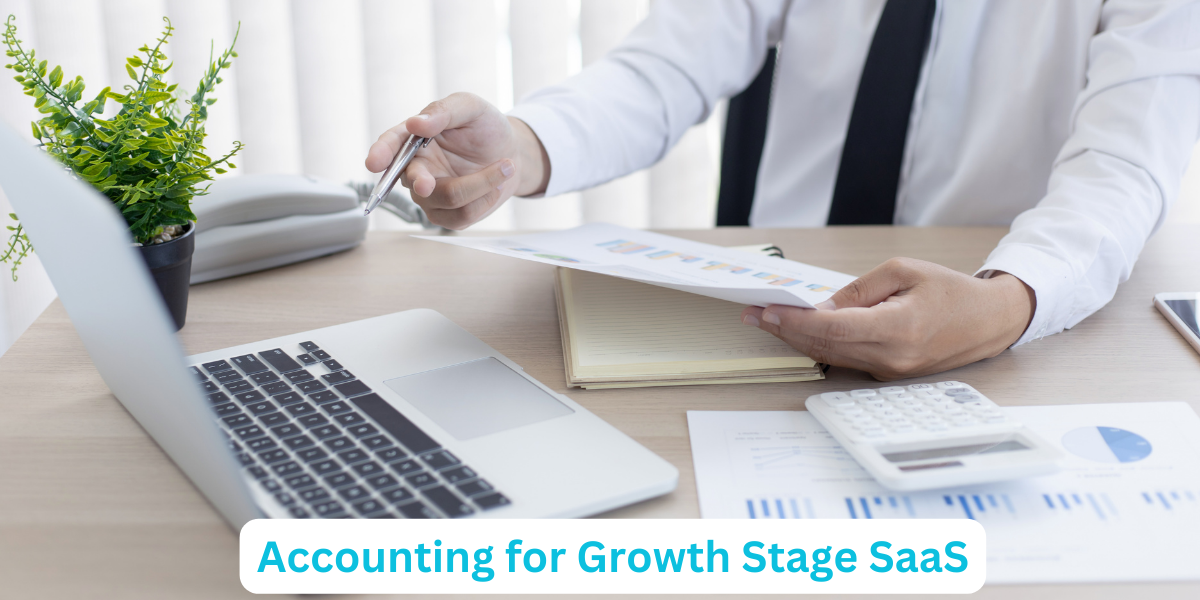Accounting for Growth Stage SaaS
If your SaaS company grows from rough beginnings to the stage of high growth and everything is changed, including your accounting. Accounting for growth stages,, SaaS isn’t merely concerned with tracking expenses and revenue anymore. anymore range. It’s about making financial transparency clear attracting investors, staying in compliance, and facilitating the confidence of decisions.
Let’s discuss the reasons why this step is important, what you have to keep track of and how to organize your accounting to scale.,
Why Accounting Is Crucial in the Growth Stage of a SaaS Business
Imagine that you’ve just taken a Series A investment with a sales force, hired and launched into new markets. It’s growing quickly, but the costs are also rising. You check your financials and see… you’ve got in a state of chaos. This is a common ache spot.
In the phase of growth, SaaS businesses experience:
- Complex billing cycles for subscriptions
- Multi-year contracts
- Deferred revenue
- More hiring and more expenses
- Examining the investor
This is where strategic, smart accounting can be the difference between success and failure for your company.
Bookkeeping for SaaS: Get Your Basics Right Early
Before you can participate in board meetings or investor decks Before you can participate in board meetings or investor decks, the accounting to support SaaS should be precise. In this phase, errors in categorizing recurring revenue the churn or deferred income could distort your financial picture.
There are a few essentials to have:
- Monitor the Monthly Recurring Income (MRR) and Annual Recurring Revenue (ARR) separately
- Differentiate delayed revenue from the revenue that is recognized
- Utilize tools such as QuickBooks to create SaaS and integrate them to subscription platform for billing.
It is even better to collaborate with a specialist SaaS-focused CPA who is familiar with the specifics and nuances of the business.
Revenue Recognition and IFRS 15: Staying Compliant
Revenue recognition for SaaS under IFRS 15 isn’t easy. It isn’t enough to acknowledge revenue once the money arrives in your account. You must follow a five-step process:
- Find out the contract
- Define the performance obligations
- Determine transaction price
- Assign the cost to fulfill obligations
- Recognize the revenue when you meet obligations
It gets more complicated because of contracts that have a multi-year period of income acknowledgement. Let’s suppose that a customer is paying upfront for a three-year plan. Your books need to reflect the revenues monthly throughout the 36 months, and not all at all at.
SaaS Capitalization: What You Can and Can’t Capitalize
When you build your product, certain expenses may be capitalized–meaning they’re accounted for as assets and then depreciated over time. Others have to be expensed right away.
Capitalization is generally possible:
- Direct development of software costs after the feasibility stage
- Customized systems and integrations to ensure future use
Not capitalizable:
- Sales, marketing or administrative costs
- Development of the stage of research and planning
Capitalization is a way to reflect your company’s long-term worth, but only if it is executed correctly. A skilled CPA for SaaS is a wise investment.
Metrics That Matter: From BIWS SaaS Modeling to Cash Flow Insights
If you’re in the middle of fundraising or planning for acquisition and acquisition, you’ll hear lots about the BIWS SaaS metrics and models. They go beyond the basic:
- CAC Payback Period
- Net Dollar Retention
- LTV:CAC Ratio
- Burn Multiple
- Gross Margin %
A clean, GAAP-compliant accounting system allows these numbers to be precise. In order to model financials you’ll need historical data organized by cohorts and recognized revenue — an crucial element of every SAaS model for LBO.
Step-by-Step Accounting Setup for Growth-Stage SaaS
Here’s how to start or improve your accounting
1. Implement Accrual Accounting
Change to cash-based accrual-based accounting If you don’t have it yet. This allows you to align expenses and revenue according to when they’re earned, not the time when cash is received.
2. Set Up Revenue Recognition Software
Tools such as the Stripe Revenue Recognition or SaaSOptics make it easier to comply with ASC 606 and IFRS 15.
3. Choose SaaS-Friendly Bookkeeping Tools
Utilize QuickBooks Online Advanced or Xero with integrations to allow the billing of subscriptions (e.g., Chargebee, Recurly).
4. Build a KPI Dashboard
Centralize your metrics using an application like ChartMogul or Baremetrics to track MRR, churn, as well as CAC in real-time.
5. Hire a SaaS-Savvy Finance Partner
It’s an part-time CFO or a dedicated firm Find someone proficient with Accounting SaaS to manage the tax-related compliance process, modeling financials as well as strategic plan.
Real-Life Story: When Accounting Saved a SaaS Company
Meet Sarah who is co-founder of a rapidly growing HR SaaS instrument. Her company made $2 million in ARR, however they were unable to close their books on time and their metrics were off the mark. Investors started getting nervous.
She hired an SaaS CFO who implemented software for revenue recognition as well as reclassified expenses. She also updated its financial documents.
After three months, they had raised $5 million in Series A, without altering the product in any way. All it took was improving the accounting.
FAQ: Accounting for Growth Stage SaaS
What exactly is SaaS revenue recognition in IFRS 15?
IFR 15 describes the manner in which SaaS businesses must be able to recognize revenues only after services have been provided. In the case of subscriptions, this generally means revenue is credited every month throughout the contract term not all at once, which is particularly essential in the case of upfront payments or contracts with a number of years.
What is bookkeeping? SaaS?
bookkeeping in SaaS includes the tracking of regular revenue, deferred revenues and other expenses that are specific for SaaS businesses. It’s more complicated than traditional bookkeeping because of the model of subscription, churn, as well as conformity to GAAP as well as IFRS.
What exactly does an SaaS CPA do?
A SaaS CPA is a Certified Public Accountant specialized in software-as-a-service businesses. They are knowledgeable about the rules of capitalization, subscription revenue and capitalization and are able to assist in ensuring that you are in compliance with ASC 606/IFRS 15, while offering tax and strategic guidance.
What exactly is SaaS capitalization?
Capitalization of SaaS is the process of making certain development costs assets in the balance sheet. It can help demonstrate your company’s investment in intellectual property as well as its potential value, especially when it comes to raising funds.
What is the method by which multi-year contract revenues are to be recognized?
When it comes to contracts that have a multi-year period of revenues recognition and revenue recognition, the revenue needs to be recognized over the course of the contract, even if clients make a payment in advance. This means the establishment of deferred revenue accounts, and then recognizing the income each month in accordance with the service delivered.
What is BIWS SaaS?
The term “BIWS” is used to describe the HTML0 version of BIWS. SaaS is a reference to specific SaaS modeling content in Breaking Into Wall Street. It helps you build valuation models, financial models and other metrics that are specifically designed for SaaS companies. They are beneficial for M&A fundraising, M&A, and analysis.
Can I utilize QuickBooks to use SaaS accounting?
Yes! QuickBooks with SaaS performs well when used in conjunction with add-ons such ChartMogul, SaaSOptics, or Stripe. It monitors regular revenue, customer invoices and is able to integrate with various billing platforms.
What is the SaaS LBO model?
An SaaS model for LBO is a leveraged buyout strategy specifically designed for subscription companies. It assesses whether an SaaS company is able to be acquired through debt, by analyzing the flow of cash, its growth and retention. Accurate accounting is vital for these models to function.
Final Thoughts: Set the Stage for Scalable Success
The sooner you begin investing in a smart accounting software for SaaS that is in the growth stage the quicker you’ll be able to scale to impress investors and create a sustainable business. Your numbers speak for you. Make sure they’re telling the story you would like to hear.
If you’re in search of an application that can handle compliance, recurring bill, and revenue recognition in one package, revenue recognition software from Stripe should be worth a review.
.
Just like using the most popular SaaS sales methodology helps you close more deals, getting your accounting right at the growth stage helps you keep more of what you earn and plan for what’s next.


